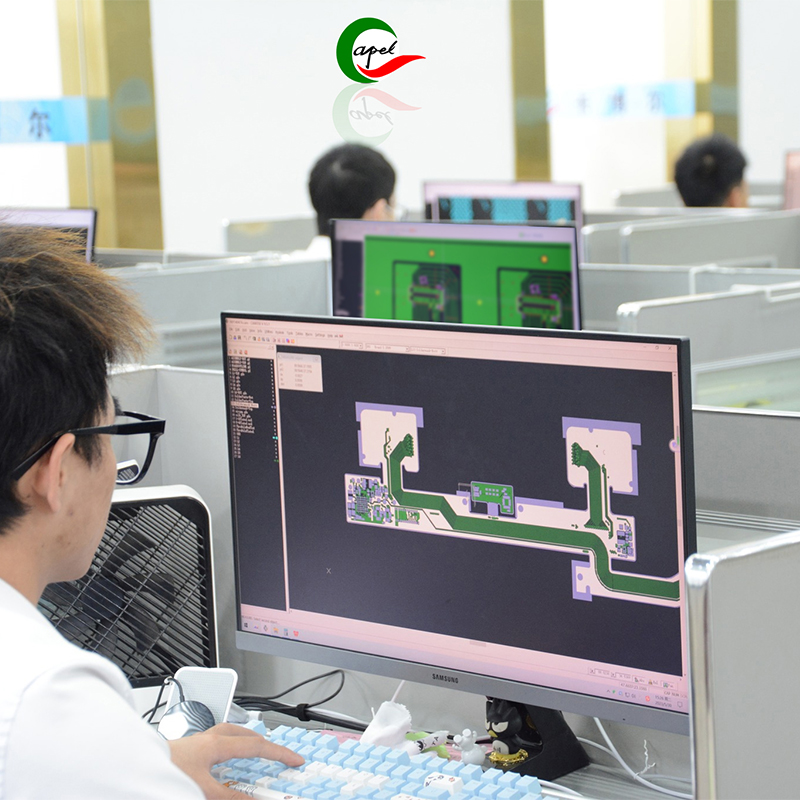Introduction
In this article, we will explore various strategies to optimize the design of a rigid flex circuit board for cost efficiency without compromising its performance or reliability.
Rigid flex circuit boards offer a unique combination of flexibility and durability, making them an appealing choice for many electronic applications. However, concerns about cost can sometimes deter designers from incorporating rigid flex boards into their designs.
Careful Component Selection
To optimize the cost efficiency of a rigid flex circuit board, one should pay close attention to the selection of components. Consider using standard, off-the-shelf components instead of custom-made options when possible. Custom components often come with higher costs due to manufacturing and testing requirements. By choosing widely available components, you can take advantage of economies of scale, reducing both manufacturing and component procurement costs.
Simplify the Design
Keeping the design as simple as possible is another effective way to optimize costs. Complexity in the design often leads to increased manufacturing time and higher component costs. Evaluate the functionality and features of the circuit carefully and eliminate any unnecessary elements. Collaboration with the manufacturing partner early in the design phase can help identify areas for simplification, reducing both material and labor costs.
Optimize Board Size
The overall size of a rigid flex circuit board has a direct impact on manufacturing costs. Larger boards require more materials, longer cycle times during manufacturing, and can increase the risk of defects. Optimize the board size by eliminating unused areas or unnecessary features. However, be careful not to compromise the performance or functionality of the board by excessively reducing its size. Finding the right balance between size and function is key to cost optimization.
Design for Manufacturability
Designing the rigid flex board with manufacturability in mind can significantly impact cost efficiency. Collaborate closely with the manufacturing partner to ensure that the design aligns with their capabilities and processes. Designing for ease of assembly, including the placement of components and routing of traces, can minimize the time and effort required during manufacturing. Simplifying the manufacturing process will reduce costs and increase overall efficiency.
Material Selection
The selection of materials for a rigid flex circuit board can have a substantial impact on cost efficiency. Consider alternative materials that offer similar functionality but at a lower price point. Conduct a thorough cost and performance analysis to identify suitable materials that can meet your design requirements. Additionally, work closely with your manufacturing partner to source materials at competitive prices without sacrificing quality or reliability.
Balance Layer Stackups
The layer stackup configuration of a rigid flex circuit board affects manufacturing costs, signal integrity, and overall reliability. Evaluate the design requirements and carefully determine the necessary number of layers. Reducing the number of layers in the stackup can lower manufacturing costs, as each additional layer adds complexity and requires more materials. However, ensure that the optimized layer configuration still meets the signal integrity requirements of the design.
Minimize Design Iterations
Design iterations typically incur additional costs in terms of time, effort, and resources. Minimizing the number of design iterations is crucial for cost efficiency. Use proper design verification techniques, such as simulation tools and prototyping, to identify and address potential issues early in the design process. This will help avoid costly rework and iterations later on.
Consider End-of-Life (EOL) Issues
While optimizing the initial cost of a rigid flex board is important, it is also essential to consider the long-term cost implications, particularly with regard to EOL issues. Components with long lead times or limited availability can increase costs if replacements need to be sourced in the future. Ensure that critical components have suitable alternatives and plan for obsolescence management to mitigate potential cost increases in the future.
Conclusion
Designing a cost-efficient rigid flex circuit board requires careful consideration of various factors, including component selection, design simplicity, board size optimization, manufacturability, material selection, layer stackup configuration, and minimizing design iterations. By adopting these strategies, designers can strike a balance between cost optimization and performance requirements while ensuring a reliable and efficient rigid flex circuit board design. Collaborating with manufacturing partners early on in the design process and leveraging their expertise can further assist in achieving cost efficiency without compromising the integrity of the design.
Post time: Oct-06-2023
Back







